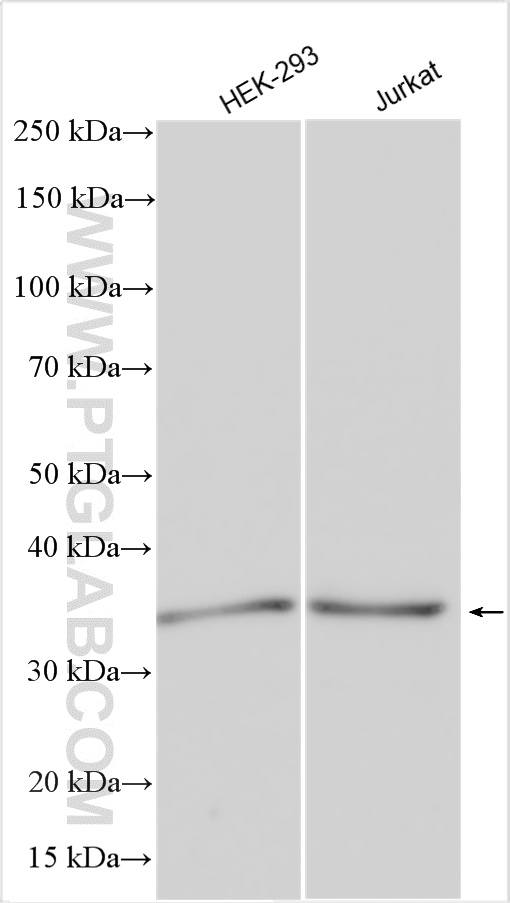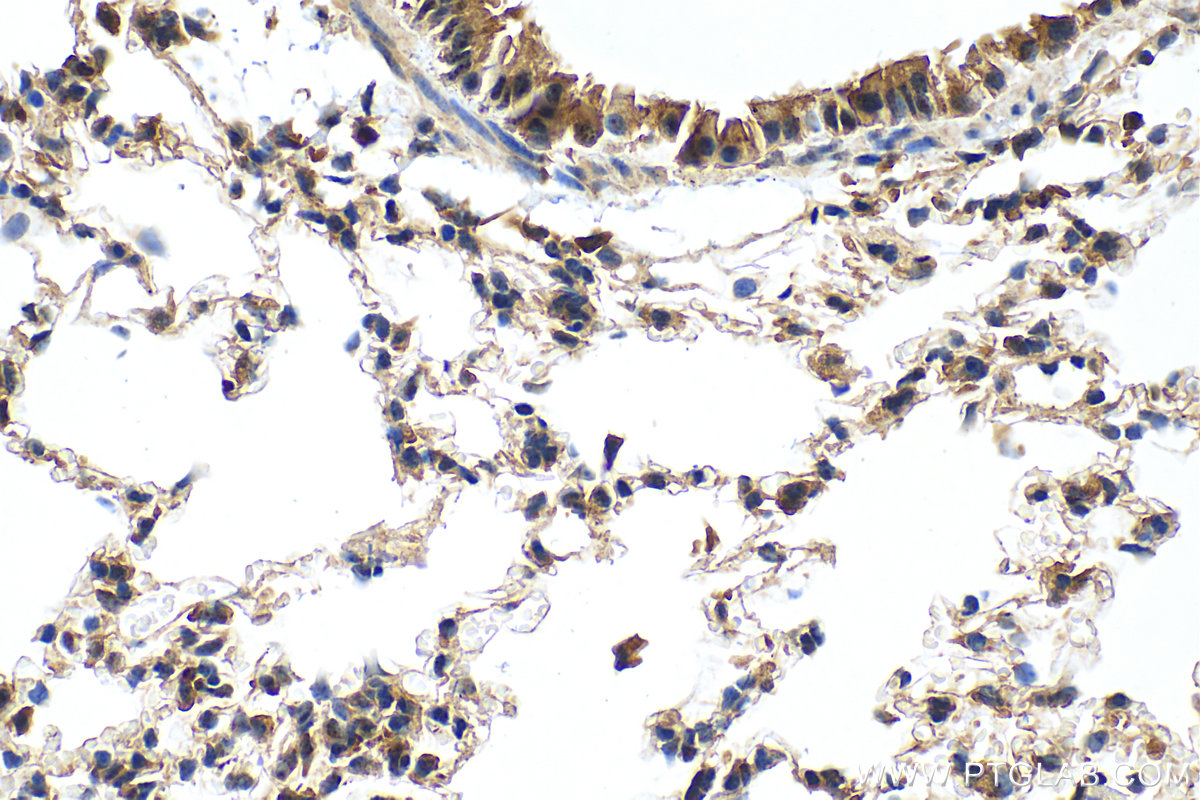验证数据展示
经过测试的应用
| Positive WB detected in | HEK-293 cells, Jurkat cells |
| Positive IHC detected in | mouse lung tissue Note: suggested antigen retrieval with TE buffer pH 9.0; (*) Alternatively, antigen retrieval may be performed with citrate buffer pH 6.0 |
推荐稀释比
| 应用 | 推荐稀释比 |
|---|---|
| Western Blot (WB) | WB : 1:500-1:2000 |
| Immunohistochemistry (IHC) | IHC : 1:50-1:500 |
| It is recommended that this reagent should be titrated in each testing system to obtain optimal results. | |
| Sample-dependent, Check data in validation data gallery. | |
产品信息
30191-1-AP targets PDZD2 in WB, IHC, ELISA applications and shows reactivity with Human, mouse samples.
| 经测试应用 | WB, IHC, ELISA Application Description |
| 经测试反应性 | Human, mouse |
| 免疫原 | PDZD2 fusion protein Ag32900 种属同源性预测 |
| 宿主/亚型 | Rabbit / IgG |
| 抗体类别 | Polyclonal |
| 产品类型 | Antibody |
| 全称 | PDZ domain containing 2 |
| 别名 | AIPC, KIAA0300, PAPIN, PDZ domain containing 2, PDZD2, PDZK3, PIN1 |
| 计算分子量 | 302 kDa |
| 观测分子量 | 37 kDa |
| GenBank蛋白编号 | NM_178140 |
| 基因名称 | PDZD2 |
| Gene ID (NCBI) | 23037 |
| RRID | AB_3086258 |
| 偶联类型 | Unconjugated |
| 形式 | Liquid |
| 纯化方式 | Antigen affinity purification |
| UNIPROT ID | O15018 |
| 储存缓冲液 | PBS with 0.02% sodium azide and 50% glycerol , pH 7.3 |
| 储存条件 | Store at -20°C. Stable for one year after shipment. Aliquoting is unnecessary for -20oC storage. |
背景介绍
PDZD2, PDZ-domain containing-2, also named as AIPC, KIAA0300 and PDZK3, is associated with the early promotion of prostate tumoregenesis. The antibody recognizes near the N-term of PDZD2. PDZD2 is a novel factor that affects the growth and differentiation of human fetal pancreatic progenitor cells. The secreted form sPDZD2 can be detected 37 kDa (PMID: 18037333).
实验方案
| Product Specific Protocols | |
|---|---|
| WB protocol for PDZD2 antibody 30191-1-AP | Download protocol |
| IHC protocol for PDZD2 antibody 30191-1-AP | Download protocol |
| Standard Protocols | |
|---|---|
| Click here to view our Standard Protocols |


